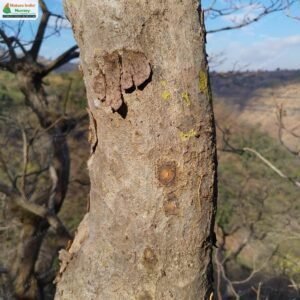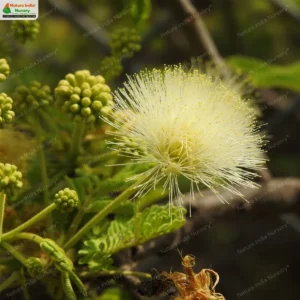Long Description
Mallotus polycarpus, commonly known as Multi-fruited Trevia, is a captivating deciduous tree that thrives in the tropical and subtropical regions of the Indian subcontinent and Southeast Asia. This tree is a notable sight in evergreen forests, along hill slopes, and riverbanks, where it can be found growing up to an altitude of 1200 meters. Reaching heights of 10-20 meters, the tree’s stature is complemented by its unique features, including small, greenish flowers that appear separately as male and female blooms. The male flowers boast a distinctive red calyx, while the female flowers are racemose, adding to the tree’s intriguing characteristics.
The fruits of the Multi-fruited Trevia are small, ovoid capsules that measure about 1 cm in diameter, with a thin outer shell that splits open when mature. This tree plays a significant role in its ecosystem, providing a source of food and attracting pollinators. Its versatility and value extend beyond its ecological importance, as it also offers various economic benefits, making it a valuable species in its native habitats.
Habitat
Mallotus polycarpus thrives in tropical and subtropical regions, particularly in evergreen forests, along hill slopes, and riverbanks up to an altitude of 1200 meters.
Planting and Care: Essential Tips
-
Soil Requirements: Prefers well-drained loamy or sandy-loam soils.
-
Sunlight Needs: Requires full sun exposure.
-
Watering Guidelines: Needs moderate watering, with care to avoid waterlogging.
-
Propagation Methods: Can be propagated by seeds.
Additional Information: Interesting Facts
-
Wildlife Importance: The flowers attract bees and other pollinators, while the fruits are consumed by various wildlife, including birds and small mammals.
-
Economic Value: The wood is used for construction and furniture making, various parts of the tree are used in traditional medicine, and the seeds enclosed in woody capsules are favored by tribes in India.












